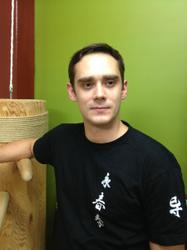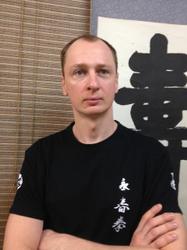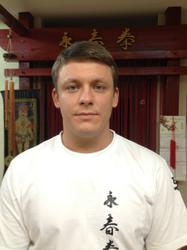Eternal Spring
Alexander Ivanov: Taoism – way of everlasting life’ magazine.
Flaming Shaolin
The history of Chinese martial arts has been documented for one and a half thousand years. It is full of ancient traditions, factual stories about Masters, incredible tales and poetic legends. This is a special world whose phenomenal extremes attract us by their alluring beauty.
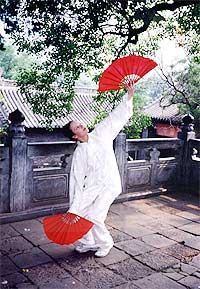 Centuries ago, as legend has it, a lady with the poetic name Yunchun was born. Her name literally translates as Blossoming Spring’. The name of a delicate creature compared to a pretty flower, closely and forever connected with a whole martial arts division: her name, Yunchun.
Centuries ago, as legend has it, a lady with the poetic name Yunchun was born. Her name literally translates as Blossoming Spring’. The name of a delicate creature compared to a pretty flower, closely and forever connected with a whole martial arts division: her name, Yunchun.
Part of the genealogy of the Yun Chun Quan style, which is listed in books or passed on by word of mouth, is riddled with the inconsistencies. It reveals to students only some branches of its genealogical tree, the roots of which are hidden in the shadow of the past centuries. The crown is lost in the family clans of Chinese and Vietnamese masters, hiding the truth under the guise of Time.
In ancient China, the Manchu Dynasty of Qinq (1644-1911) dominated. In those days, the Manchus comprised only 10% of the whole population and, to remain in power, they instigated a policy of bloody massacre, spreading fear and anger in the hearts of the Chinese people. The native Chinese people had to obey unjust laws which trampled’ on their rights and humiliated them and took away their dignity. For them all high State positions were closed’. Obstacles to career growth were placed in their way. To de-personalise the Chinese nation and to spiritually neutralise its growing generations, the Manchu authorities forbade the study of martial arts. One protagonist which kept the Chinese spiritual culture alive, however, was the Shaolin Monastery. No cruelties or forbiddings could break the spirit of the proud inhabitants of Shaolin. Like a wind blows a fire, the unfairness of the Manchu leaders instilled in their hearts a desire to fight for people's freedom’. The Shaolin Monastery became a training centre for national fighters for a future revolution’.
The walls of Shaolin became a shelter for many monks who had survived the conflicts. The Manchu leaders despised the monastery as it gave people the energy to fight against unfairness and violence’ and was essentially a symbol of disobedience and hope in the fight against foreign rule’.
Monks and Shaolin Monastery students bravely fought and repelled the attacks of the Government's army. Hardest of all was to stand against ignobility and slyness. In 1810 a group of betrayers carried out an arson attack on South Shaolin, situated in the Fujian province on the Alashan Mountain. The Monastery gates were opened to General Chan Van Hoa’s troops. The Manchus ruthlessly defeated the resistance, in the process killing hundreds of monks and burning the rebel monastery to the ground.
Only a few of the Masters managed to escape with their lives. Luckily among them was a nun named Ng Mui. Having survived the bloody massacre in Shaolin, she sought refuge in the Baihesi Temple (White Crane) on the Lun Tai Mountain. Ng Mui mourned the destroyed monastery and her deceased brothers with all of her heart. But, despite all the pain felt in her soul, the fearless and wise woman, Ng Mui, continued patiently to master the martial arts technique. She never forgot about the Manchu, who wanted her dead. Not even for a minute did the idea of conceiving a new style leave her head. Ng Mui decided to single-handedly nurture a more perfect style of martial arts, using as its foundation the Shaolin exercises taught by the venerable monk Zhi Shan. After Shaolin’s defeat he moved to the Canton province and began to teach monks in the Guangdong Monastery (Light of the Sun).
A student of the South Shaolin, called Yan Si, left Fushan and settled in Canton’s countryside. His wife died leaving behind their only daughter. Her name was Yan Yunchun (Yim Wing-chun), translated as Eternal Spring. They settled down together at the bottom of Tai Lun Mountain, where they opened a restaurant. Yan Si gathered a group of students and began to teach martial arts. Meanwhile Yan Yunchun grew up to be a beautiful lady. Soon, however, her beauty turned against her. Based on an ancient custom, her father promised to espouse her to a man called Leung Bok-Chou. The girl was so beautiful that one influential officer decided to force her to be his own! Yan Si couldn’t oppose such a rich and powerful man. His daughter, not wanting to become a warlord’s wife, ran away. The only person who she could possibly ask for help and support was the wise nun Ng Mui. Having escaped into the Baihesi Monastery, Yan Yunchun told Ng Mui about her troubles. Ng Mui felt for the poor girl who wasn’t frightened to bring on an influential man’s anger. She decided to take her on as her student. Ng Mui took Yan Yunchun to the mountains and began to teach her martial arts.
There were tales that Ng Mui accidentally became a witness to a bloody fight between a crane and a snake. The snake swirled its body around the long neck of the bird and tried to sting it to death. The crane used its long wings and sharp beak. It bit the snake. They both stood on the same spot throwing lightning-like and precise strikes at one another. This picture was so impressive that it became imbedded in the nun’s memory forever, never to let her go. In training she began to imitate the highly-skilled snake and the brave bird and soon designed a system of martial technique which combined the moves of both of them. Over the course of three years she passed this technique on to Ng Mui’s favourite student Yan Yunchun.
After the nun’s death in 1726, Yan Yunchun continued to perfect her body and mind. On one occasion she went into the forest and heard the dreadful roaring of predators. She carefully moved the branches and saw a tiger and leopard fighting. They fought on a narrow path in a canyon for a killed prey which lay on the mountain slope. The tiger was fearless, courageous and cruel, but the leopard was smart, highly-skilled and flexible. Both animals had to keep close to each other in their battle because of their fear of falling down the cliff-side. They used short steps and fast strokes, ducking and diving away from their opponent’s paws.
This fight between the tiger and the leopard brought Yan Yunchun upon the idea to create two more styles of martial arts. When she returned to the Temple she combined the techniques of the snake, the crane, the tiger and the leopard. She soon realised that, at last, it was time to make her teacher’s dream come true and create a new style designed for the flexible and dextrous body of a woman. After lengthy searching, a perfect technique combining the values of the Shaolin’s school with the new animal- imagery was designed. Legend has it there were 5 symbols in this technique: a dragon, a snake, a tiger, a leopard and a crane. This also corresponds to the five petals of the blooming Meihua flower, always reminding us of the first teacher. It stands for the five bases of Eastern philosophy: they are generosity, fidelity, decency, intelligence and faith. Further to these are the five warrior qualities: they are states of hardness, softness, intelligence, calmness and bravery.
Yan Yunchun designed a special type of striking which doesn’t require much physical strength. A punch with the fist is made from the centre of the chest directly straight ahead. Blocks were made like supports or the overlapping of the palms on the opponent’s attacking limbs. She also designed new combat tactics. These involved the core idea of staying close to your opponent. In this way you prevent him from accelerating his strikes and actually take away his physical strength advantage. This aims to hinder the movement of the offender’s kicks. She learned to place her legs under the legs of the opponent in such a manner that allowed her to strikes at the opponent’s shins.
Soon Yan Yunchun returned to her father’s home on the Lun Tai Mountain. There she crossed paths once again with the powerful officer who never lost his desire to make her his bed-wife’. This was the first instance when Yunchun was forced to use her martial arts technique in order to stand up for her-self. She won easily.
After this both father and daughter returned to Canton, where Yan married Leung Bok-Chou, who was waiting for her through all these years. Soon her husband became her first student and she passed all her martial arts knowledge on to him. When she died, Leung Bok-Chou decided to immortalise his one and only much loved wife by naming the most perfect martial arts technique after her.
Leung Bok-Chou passed Yunchun’s secrets on to a man called Leung Lan Qui who, in turn, took Yuan Hua Bao as his student. He was an actor in a Guandong opera troupe called Red Junk’ and often travelled on tours to many parts of the country. Thanks to his travelling, he came across a student by the name of Liang Erdi. They immediately became friends and began to exchange martial arts knowledge. Around the middle of the 19th Century, Yuan Hua Bao and Liang Erdi left the acting troop and moved to Foshan, where they in turn educated a pharmacist Liang Tsang.
Liang Tsang was originally from a respected family who owned a pharmacy. He was a well-educated man. His business was booming and his patients were very happy with him. He dedicated all his free time to literature and martial arts. He wasn’t satisfied with some styles where the main emphasis was on physical strength. He wanted to learn some other system, whose effectiveness was in its technique.
Liang Tsang adopted the best elements from the Shaolin methods. He omitted their disadvantages and proof-checked their real martial effect in combat. By this he developed Yunchun Quan’ and strengthened its martial capabilities.
Liang Tsang did not have an official school and actually taught Yunchun Quan right from his pharmacy! He devoted his life to studying the Yunchun mysteries and reached such a high level and attained such a unique grasp of the many techniques that he was named Yunchun King’ by other Masters and experts. Because of this many warriors challenged him. Through his many combats he managed to pinpoint Yunchun’s strengths and weaknesses.
Liang Tsang brought up several students himself, not to mention his sons Liang Chun and Lian Bik. Numbering among his students was one very gifted young man nicknamed Va Wooden Hands’. He earned this name because his hands were known to be as strong as wood. During training he was known to have often broken the arms of a wooden dummy (Mook Yan Joang).
A currency exchange was located next to Liang Tsang’s pharmacy. Its owner was Chan Va Shun who was nicknamed Money-Changer Va’. He knew that Liang Tsang was a great Yunchun specialist and also wanted to become his student. In those days you could not study Kung Fu for love nor money! Not like nowadays. So Chan Va Shun doubted whether the Master would want to teach him. At the end of his working day, Chan Va Shun would sneak into Liang Tsang’s pharmacy and, through a gap in the door, would observe the great Master teaching his students. Liang Tsang was his icon’ and, as the days went by, he was impressed more and more by the Master. One day he mustered up the courage and decided to approach Liang Tsang and ask him for a favour. As expected, the Master politely refused! Chan Va Shun was disappointed but didn’t lose hope. On one occasion, in Liang Tsang’s absence, Va Wooden Hands brought Chan Va Shun into the pharmacy. When the pharmacist’s son realised that this man had been secretly studying the Yunchun style from behind the door, he got very angry. He decided, rather facetiously, to demonstrate to Chan Va Shun a sticky hands’ technique in a particularly harsh manner. But the young man, having then mistimed his blow, hit Liang Chun with the back of his palm so hard that he fell and landed on Liang Tsang’s favourite armchair, causing one of its legs to snap off! Both young men got a fright. They envisaged the Master getting angry and punishing them for what they did. They decided, therefore, not to mention anything of their duel. Later that day, Liang Tsang returned home. Naturally he eventually went to sit down for a rest on his favourite chair. The chair, however, buckled and toppled over, sending the Master sprawling on the floor. Liang Tsang decided to investigate what had happened in his absence. Liang Chun eventually came clean and revealed everything in detail. On hearing the full story from his son, Liang Tsang asked Va Wooden Hands how Chan Va Shun could possibly have learnt Yunchun. Va explained that he taught him a few elements. The rest, though, he learned all by himself, simply by looking through a gap in the door! Liang Tsang asked Va to seek out and fetch his friend. Va Wooden Hands suddenly remembered that it was forbidden to teach without the teacher’s permission and thought they would get punished. He therefore advised his friend to escape. When Va Wooden Hands returned home by himself, Liang Tsang was very surprised at Chan Va Shun’s absence. Liang Tsang immediately understood the situation and reassured Va that he wasn’t planning to punish anyone. Then he explained that he only wanted to see what and how much Yunchun his son’s friend had learned. He wanted to evaluate his abilities. Va Wooden Hands was naturally very relieved. He happily and quickly found his friend and brought him to the Master. Having later that day evaluated Chan Va Shun’s talent, the Master agreed to take him on as his student.
After the death of Liang Tsang, his sons Liang Bik and Liang Chun went to Hong Kong. Their friend and a school-mate Chan Va Shun remained in Foshan and began to teach Yunchun style.
At the time, Yip Man’s father was a Hong Kong businessman. He helped his father. Both being in Hong Kong, Yip Man and Liang Bik soon met. Not long after, Liang Chun took on Yip Man as his student. Before his death, Chan Va Shun had appointed Yip Man as his successor, who himself began to teach Yunchun in Hong Kong at the age of 56. This is how the Hong Kong branch of Yunchun Quan became established.
Yao Tsai passed Foshan’s Yunchun Quan on to Yao Tsi. Yao Tsi taught Liang Tsuan. Liang Tsuan, in turn, taught Liang Guanman, who later represented the ninth generation of Foshan’s Yunchun Quan.
As Yip Man’s renown was spreading, his number of students grew. Yunchun was especially respected by police officers. Yip Man always iterated to his students to refrain from teaching foreigners. The first person to disobey this rule was one of his own students, the later famous film actor, Bruce Lee. He started to teach Yunchun to foreigners. Many Chinese teachers tried incessantly to close his school down. One day, near the end of his learning, Bruce Lee requested his teacher to teach him some final Wooden Dummy techniques. He even promised Yip a big apartment. But Yip Man steadfastly answered with a sharp refusal. This is the reason why Bruce Lee had to create his own hybrid fighting version of Yunchun Quan. This became the Way of the Intercepting Fist’ (Jeet Kune Do) with the addition of the Philippine swords fighting techniques (Escrima), not to mention various other Asian and Western fighting styles. Bruce Lee expanded his system by introducing leg and feet kicks, throws and several other elements indigenous to boxing and wrestling. The original Yunchun Quan teaching had soon become forgotten. The legend of the Little Dragon’ and its relevance to Yunchun remain in the minds of many Wushu fans. Riding on the wave of this enthusiasm, many large Yunchun organisations were established, especially in the USA, Germany and Great Britain.
The modern interpretation of Yunchun is commonly associated with the Hong Kong branch (which was established by Yip Man), the Vietnamese branch (established by Te Kong) and the Chinese branch (led by Liang Guanman) all followed by a plethora of Masters developing martial arts in many countries throughout the world.
Yunchun Quan is based on the principles of effectiveness and rationality. The reality of applied techniques is valued higher than the external beauty of moves. Yun Chun Quan is considered to be one of the most real’ martial styles. It is currently studied in many special divisions and armies around the world (including USA, Israel, Vietnam, England).
Here are the main principles of Yunchun:
- avoid meeting an opponent’s force with a similar force;
- always act along the centreline;
- use both hands simultaneously;
- sense your opponent’s impulses and intentions and react immediately;
- do not attack first but study your opponent’s moves;
- use your opponent’s strength against him.
Yunchun’s martial arts is unique: Chi Sao’ (sticking hands) is a set of drills which develops a particular sensitivity and control of an opponent. A set of 108 secret drills on the wooden dummy (Mook Yan Joang) as well as short range combat punches (with little or no backswing) have no comparison in the world of martial arts. A pupil becomes hypersensitive to his opponent’s motions, controls all his actions and precisely reacts to all arising situations. Following the partner’s movements, the Yunchun Master, with his wielding skill, becomes unpredictable to the opponent. A transformation from softness to hardness occurs. Having a well developed intuition and foresight, he predicts each of his attacker’s moves and sends it back using a rotational inertia. This ability also holds firm in everyday life. It is known that for each and every force, there is an equal but opposite force. As a general rule unpleasant situations with unpredictable physical outcomes are less likely to happen to martial arts oriented individuals. This is thanks to their harmonic internal strength which helps to resolve difficult situations surprisingly easily and freely.
Think of an axle’ spanning the length of the human spine. This is what Yunchun art calls the Central Line’. From a metaphysical point of view, Earth and Sky unite in the human body through this line.
All the above named principles have been incarnated in Yunchun’s school emblem. It is a plum flower with five petals. These symbolize the five main elements: wood, fire, earth, metal and water. Legend contends that each of them may be found at the origin of the universe’s creation phases according to the Book of Changes’ (written by Yi Jing, also known as I Ching). Eight stamens diverge out from the centre of the flower into four main and four intermediate light directions. They signify spreading energy lines, the strength of which is concentrated on one point from its respective direction.
The Way to Vietnam
A man called Yuan Chai Van was born in Canton in 1877. He was later to become the founder of Yunchun Quan in Vietnam. In Cantonese and Vietnamese it is pronounced Vinchun Quen.
He began his journey with Wing Chun’s King’, Liang Chi Tai, together with his two sons, Leon Sun and Leon Bik, and some other students. During his many years of study, Yuan Chan Van achieved the highest level of martial arts Mastership. Despite this, he never stopped training. Not even for one day. The teacher came to love him as a son. When Yuan Chan Van’s time came to leave, he allowed him to pass on his knowledge to those wanting to acquire a martial arts’ technique.
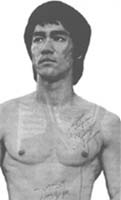 After parting with his teacher, Yuan Chan Van went to work in the south of China where he found his first students. Among them was also Yip Man, who previously studied with Chan Hoa Tuan and Leon Bik. We mention the Master Yip Man here because, several years after meeting Yuan Chan Van, he became a Superior of Yunchun Kung-Fu in Hong Kong and, later, a teacher to the world renowned actor Bruce Lee.
After parting with his teacher, Yuan Chan Van went to work in the south of China where he found his first students. Among them was also Yip Man, who previously studied with Chan Hoa Tuan and Leon Bik. We mention the Master Yip Man here because, several years after meeting Yuan Chan Van, he became a Superior of Yunchun Kung-Fu in Hong Kong and, later, a teacher to the world renowned actor Bruce Lee.
In 1936 Master Yuan Chan Van left his motherland and travelled by cargo ship To Haifon. Later that same year he travelled to Hanoi. There he found new students, this time of Vietnamese nationality. He had nine close students whom he taught continually.
In 1955 he left for Saigon where he settled in the Big Market area. Using the name Nguyen Te Kong, he began teaching martial arts to Vietnamese as well as Chinese students. They loved and respected him deeply and always helped him in difficult moments of his life. Master Te Kong always considered Vietnam his second home and, from deep in his heart, strived to pass his Wing Chun Kung-Fu knowledge on to new students. Among his best pupils were the famous teacher Ho Hai Long (Dragon Floating above the Sea), who became the second Wing Chun Superior and Uncle Kui’, who later developed the Wing Chun school traditions and taught students such as Masters Hoan Vin Zang, Santkhi and Tuan.
In Vietnam in1960 Master Nguyen Te Kong died in his 84th year, leaving behind him his vast knowledge of Wing Chun. His followers developed and spread this knowledge, carefully passing it from one generation to the next.
Master Nguyen Te Kong was named the Founder of Wing Chun Kung-Fu in Vietnam’ by his students.
Wing Chun merged naturally with the Vietnamese interpretation, gaining a soft national identity. Thanks to the efforts of Professor Hoan Vin Zang (Head of the Hanoi Federation of Martial Arts and President of the Olympic Committee of Vietnam), it is currently possible to unite the separate martial arts’ Masters. By this, old spiritual traditions may be restored and the Wing Chun school preserved.
Wing Chun in Russia
Coming to us from deep in centuries of history, we currently have a real union of inspired people maintaining and developing Wing Chun traditions in Russia. Moscow’s Zheleznaya Fleyta’ Club was established in 1988. Its founder and (unchanged) leader is Martynov Valeriy Vasilyevich, who studied Wing Chun under the leadership of the Vietnamese Master Hoan Vin Zang.
Hundreds of people and dozens of Masters have been educated at the Zheleznaya Fleyta Club. Wing Chun is now being developed in places such as Stavropol, Smolensk, Birsk, Sarov, Perm, Omsk, Noviy Yrengoy, Riga, Daugavpils, Nizhniy Novgorod, Zavolzhye and other cities of the former Russian Republics and the Baltics.
A remarkable event and occasion was the meeting and communication that took place with the Master Hvin Ngok An from Saigon, the third Superior of the Wing Chun school. After this event, the Zheleznaya Fleyta Wing Chun Club organised its first joint study-practice seminar. This prompted the spread of Wing Chun in Russia.
In 1997 the Zheleznaya Fleyta Club became a collective member of the Wushu Federation of Russia. Since then, under the aegis of the All-Russian Wushu Federation, the Club has held three Wing Chun championships in Russia.
In winter 1999 a group of the Club’s instructors travelled to Vietnam on the special invitation of Professor Hoan Vin Zang. He has just gathered the best Wing Chun instructors and followers of the famous Te Kong in his Hanoi school. This patriarchal clan school is currently considered to be the pearl’ of Vietnamese martial arts.
A greater desire to learn more about this amazing art was generated by several factors: namely, the extraordinary spiritual atmosphere of martial arts and the Wing Chun tradition, the unforgettable lessons of the two Vietnamese teachers Santkhi and Tuan and the understatement of their words. A deep interest in Wing Chun requires an academic approach to its study. One outcome aimed at tackling this task occurred in the winter of 1999 when an Introduction to the Work of the Wing Chun Club’ led by Gerolf Blittensdorf (Duesseldorf) and Birol Ozden (Colone) took place. Both men were students of famous Master Keith Kernspecht and developed Yip Man’s branch in Germany.
The Zheleznaya Fleyta Club maintains close relations with Master Yusef Shargut, the leader of the Polish Wing Chun Club and Michail Abramov, student of the Master David Passko (Great Britain).
And finally! The most important event at the Zheleznaya Fleyta Club was the organisation and hosting of the All-Russia Martial Arts Festival Wing Chun 21st Century’. It took place on 14th of October 2000. The aim of this colourful celebration, organised and arranged to a very high modern standard, was to spread information about different branches and schools of Wing Chun, to exchange experiences and to facilitate future collaborations.
History is not simply a number of facts from biographies buried under the dust of the past. It is a living energy of creativity, which represents a moment of truth. Among all worlds created by the human spirit, Wing Chun’s world is one of the most mysterious and fascinating. It is not only an effective system of self-defence, but also a way to improve your health and gain confidence in yourself and your strengths.



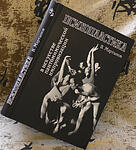

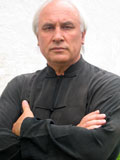 Коан – вопрос к членам Федерации Юн Чун Цюань от президента В.В. Мартынова: «Что Вы сделали для Федерации из того, что не мог бы сделать любой другой за деньги?»
Коан – вопрос к членам Федерации Юн Чун Цюань от президента В.В. Мартынова: «Что Вы сделали для Федерации из того, что не мог бы сделать любой другой за деньги?»
